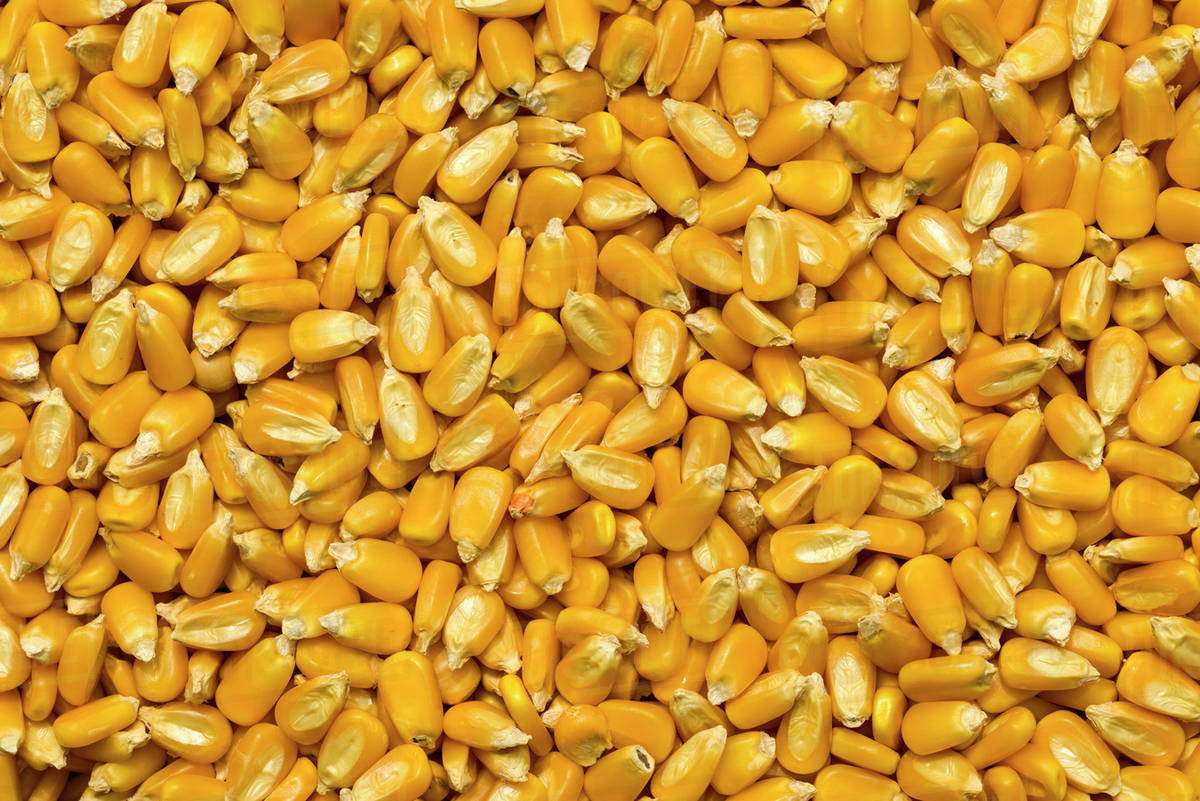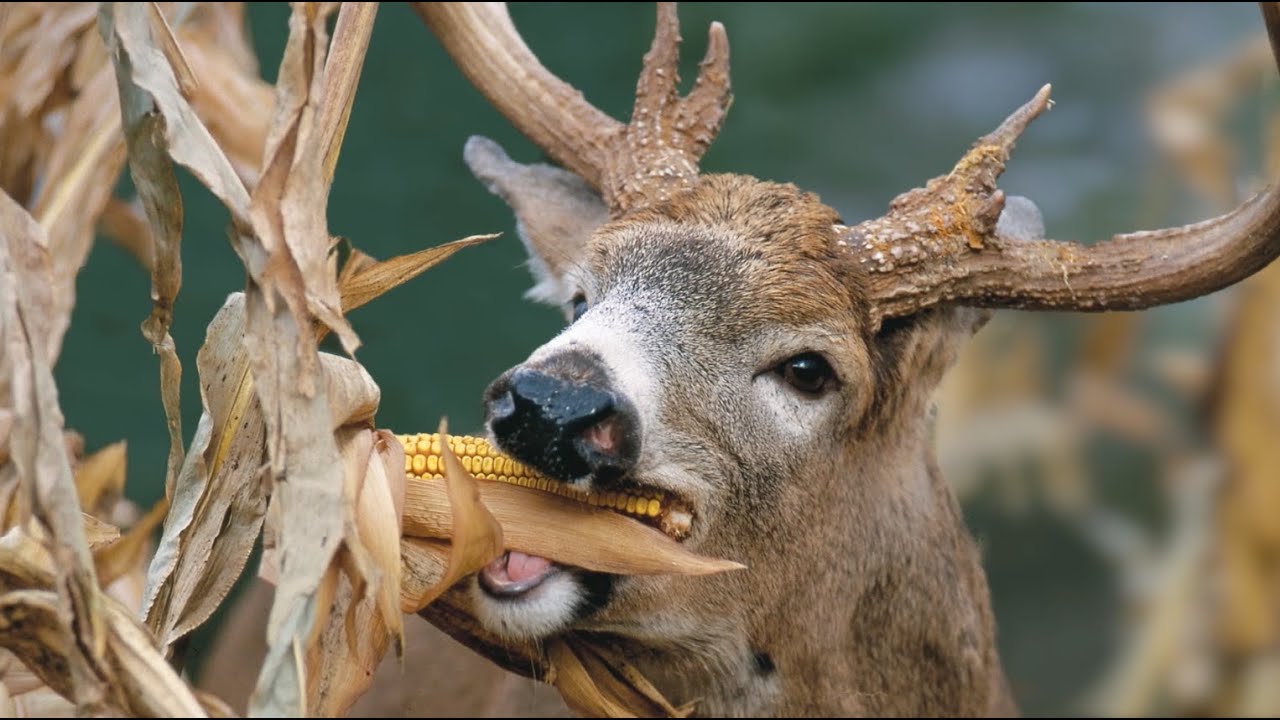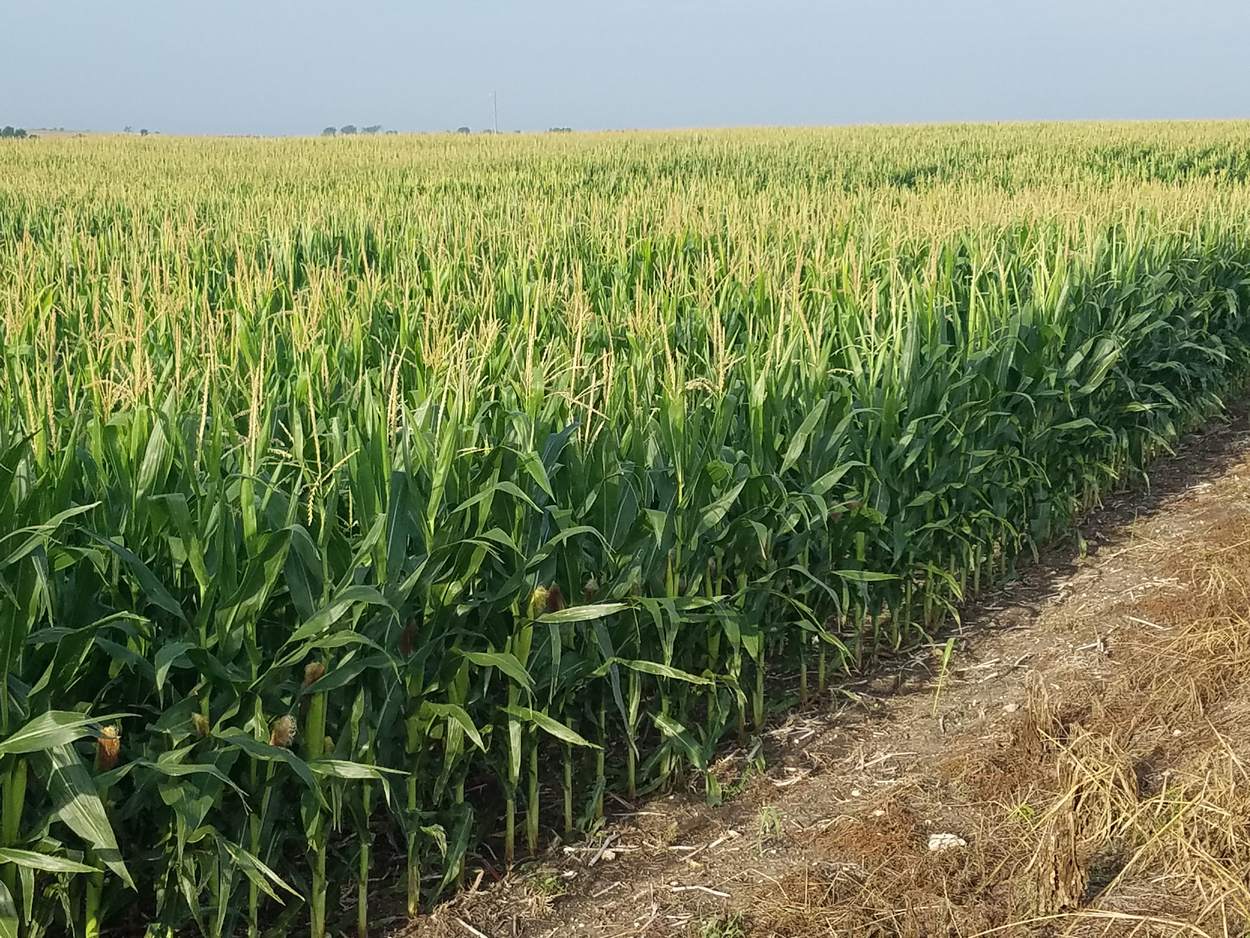Corn and Deer
The disease termed acidosis can occur anywhere when wild or domestic white-tailed deer, cervids or ruminants ingest large quantities of readily digestible carbohydrates. Often times, these food are grains such corn but acidosis in deer can also be caused by beets, apples and any other high carb, highly fermentable food. Acidosis is whitetail is characterized by indigestion, a static rumen, dehydration, diarrhea, toxins in the blood, a lack of coordination and death.
Acidosis can occur relatively quickly in whitetail whenever there is a SUDDEN and SUBSTANTIAL increase in carbohyrates in the animal’s diet. Within 24 hours of grain ingestion deer may be recumbent (down), staggering or standing quietly. Death from corn toxicity can occur within 24 to 72 hours. The rumen is usually static accompanied by diarrhea. The deer is essentially “poisoned” and dehydrated.

Corn and Acidosis
Corn is readily available and commonly fed to deer by hunters and non-hunters alike. Where legal, corn is the most widespread bait during the hunting season and there is no doubt that deer will eat it readily. Corn is high in carbohydrates and this is attractive to deer, especially during very cold periods when the seek out high energy foods. Corn consumption by deer is not necessary a bad thing. They can handle it. It’s only when they eat too much of it, when it suddenly becomes a major component of their diet.
Source: Corn causes problems in the deer’s digestive system because of characteristics of both corn and the deer. Corn is composed primarily of starch, which is meant to serve as an energy source for the corn seedling after germination. The starch intended for use by the growing corn plant is also readily available to the deer, which is why deer crave corn. Although starch is an important source of energy, it may be a problem for deer because deer are ruminants.
The Pathology of Acidosis
So how do corn or other high carb/starch foods cause problems for deer? Well, a shift from a natural diet of high fiber woody browse to low fiber, high carb foods is what starts the illness known as acidosis. The severity of the disease in deer depends on the type of grain, previous exposure of the animal to the grain, the amount consumed, the animal’s nutritional state and physical condition, and the microflora present in the animal’s digestive system.
The rapid intake of high carb foods can cause problems in deer almost immediately. Ingestion of toxic amounts of corn and other starches are followed within 2 to 6 hours by a change in the microbial population in the rumen of the deer. The number of Streptococcus sp. bacteria increase dramatically and replace the normally abundant, “good” bacteria.
This sudden increase in Streptococcus sp. bacteria produces large quantities of lactic acid. This results in the rumen pH falling to or below 5, destroying protozoa, cellulolytic organisms, and lactate utilizing organisms, and reduces rumen mobility. Suddenly, the digestion and movement of food within the deer stops. Chemical rumenitis and absorption result in lactic acidosis.
The lactic acid and lactate build-up cause excessive quantities of fluid to move into the deer’s rumen, causing dehydration.

How to Identify Corn Toxicity in Deer
Acidosis is diagnosed when deer in otherwise good physical condition are found to have died quickly and there are large quantities of corn in the stomachs. A common way to diagnose acidosis is by checking for dark colored lesions (eroded areas) on the lining of the stomach. These lesions are typically located on the folds but can be observed anywhere in the stomach.
There is no treatment for rumen acidosis in white-tailed deer and other wild ruminants because they usually found dead. A deer can survive if the high carb food is no longer available (removed, completely consumed). However, the animal will likely have a permanently damaged rumen lining.

Deer Management: Preventing Acidosis
Many people feed deer, although most of the time it is hunters that feed deer regularly and in volume through supplemental feeding programs. Some suburban homeowners feed deer with regularity too. Corn is commonly consumed by deer without issue. It’s also commonly used by hunters as bait prior and during the hunting seasons.
Corn and other high carb foods are not a problem for deer as long as they are introduced gradually into the diet and as long as they do not comprise the MAJORITY of the animal’s food intake. As such, acidosis can occur during the summer, but is more likely to occur during the winter when leafy forage is lacking. This is because without other available foods and a high need for energy, deer will readily consume any food available to them during this period.
The supplemental feeding of whitetail deer and other wild ruminants (mule deer, elk) is often the cause of corn toxcity/acidosis. The free-choice feeding of high carb foods is not recommended. Most hunters that feed corn by hand or use spin feeders to attract deer to an area for hunting do not distribute enough for it to comprise a substantial part of a single deer’s diet. This is baiting deer, not supplementing them. Baiting in this manner should not cause corn toxicity in deer.

Homeowners should not SUDDENLY pour a 50 pound sack of feed behind their house to feed cold, hungry deer that have not been exposed to corn. On the same note, hunters should not dump a pile of corn into the field since this could SUBSTANTIALLY alter a deer’s diet. Both of these scenarios end bad for the deer.
Digestive problems from the excessive intake of grain and resulting acidosis can lead to laminitis in white-tailed deer. Laminitis is caused by inadequate blood flow in the hoof which results in unusual foot growth and/or permanent lameness. Animals often die before the feet become involved. Avoid the disease of acidosis and corn toxicity in deer by NOT suddenly and substantially adding foods high in carbohydrates to their diets.